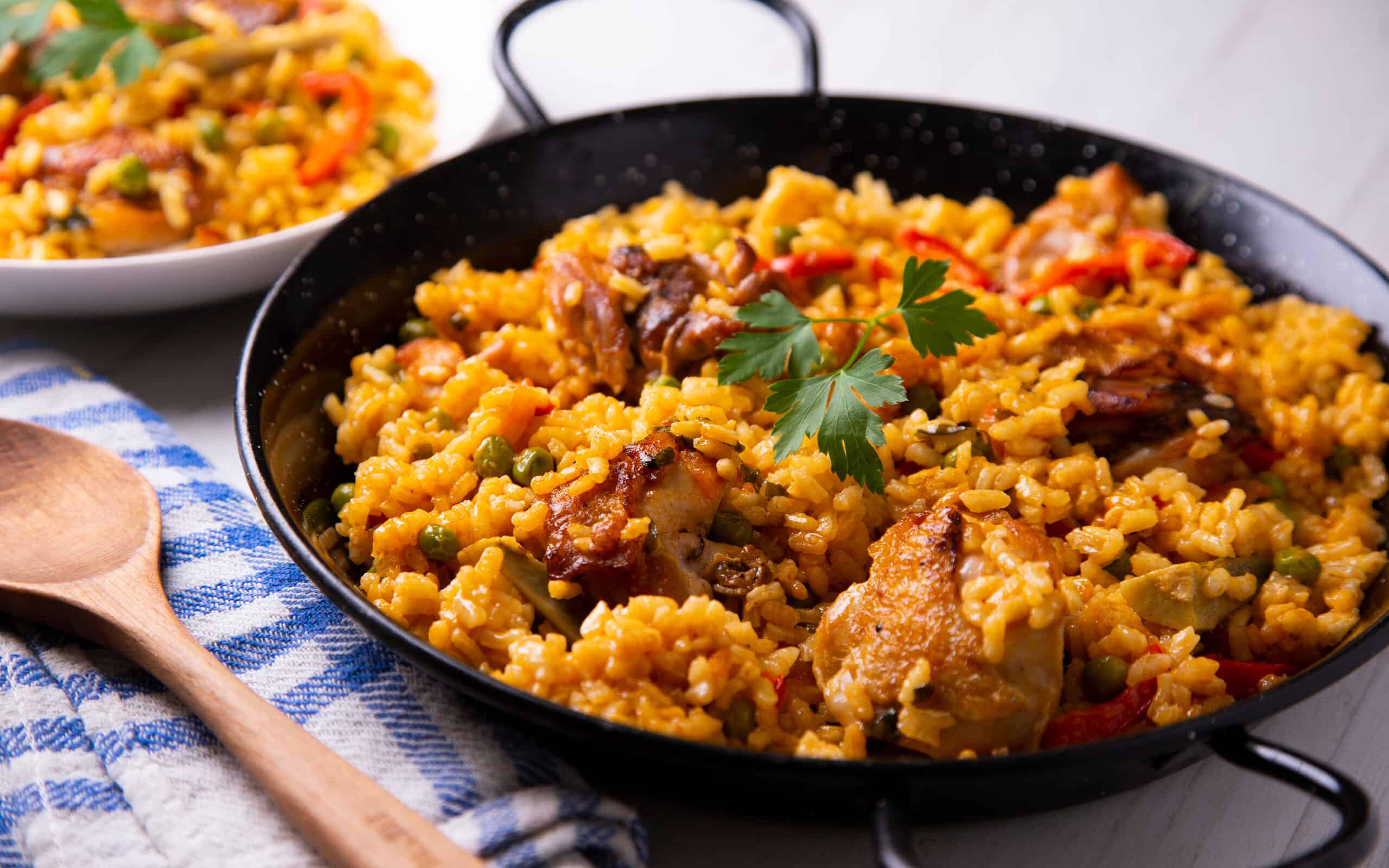Spain is one of the many incredible countries in Europe known for a variety of outstanding things. From its incredible architecture and cultural landmarks across multiple cities in structures like Sagrada Familia, the works of Antoni Gaudi, and the Guggenheim Museum in Bilbao, to its culture, including Flamenco dancing, it is a nation rich in heritage. Part of that is the Spanish cuisine, a country renowned for its tapas.
These small bites ranged from patatas bravas, jamón ibérico, croquetas, Tortilla española, and much more. Of course, there were the Spanish staples of gazpacho and paella but people didn't think of other dishes beyond these culinary essentials. Thanks to brilliant chefs like Ferran Adrià in Catalonia and Juan Mari Arzak in the Basque Country, the fine dining scene has become quite possibly the most dynamic and imaginative in Europe.
Today, Spain is at the top of the list for many food-loving travelers, offering culinary adventures not only in major cities like Barcelona and Madrid but almost everywhere in the country. A list of key Spanish culinary experiences that no visitor should miss could easily run hundreds of entries, but here are the must-try dishes that capture the essence of Spanish cuisine.
Gazpacho

©Brent Hofacker/Shutterstock.com
This is a classic cold soup from Andalusia, now ubiquitous around Spain and beyond. Recipes vary, but a traditional version includes tomatoes, cucumber, bell peppers, garlic, olive oil, and sherry vinegar (and sometimes crustless bread), combined originally by pounding with a mortar and pestle but now typically fed into a blender or food processor.
It may be slightly chunky, sometimes served with finely diced preparations of its ingredients on the side, or strained into a smooth soup, usually sipped out of cups or glasses.
Pan con tomate

©AS Foodstudio/Shutterstock.com
Literally “bread with tomato” (in Catalonia, where it is practically the national dish, it’s called pa amb tomàquet, which means the same thing). This is a slice of (usually) grilled or toasted bread rubbed with the cut side of a halved tomato so it soaks up the juices, then seasoned with olive oil and salt.
It can be eaten by itself but often serves as a vehicle for anchovies, jamón serrano (see below), or other fish or meat. In Catalonia, school kids often eat it with a few squares of chocolate as an afternoon snack, and the combination is surprisingly good.
Croquetas

©Cris Canton/Shutterstock.com
Croquettes are rounds or cylinders of various things (ham, salt cod, mushrooms, etc.) bound with béchamel (a paste of butter and flour thinned with milk), rolled in breadcrumbs, and deep-fried. Croquetas are one of the most common tapas all over Spain.
Jamón serrano

©Vlada Tikhonova/Shutterstock.com
Not a cooked dish, but one of the true glories of Spanish cuisine — salt-cured ham with sweet fat, thinly sliced and served in tapas bars and elsewhere (and also used as an ingredient in croquetas and other dishes). “Jamon serrano,” which means “mountain ham,” is related to prosciutto, but cured longer and is drier, with a more intense flavor.
A step up from jamón serrano is jamón ibérico, made exclusively from black Iberian pigs, and the finest of all is jamón ibérico de bellota, which gains its unique flavor from the fact that the pigs feed on nothing but acorns in the forest.
Tortilla española

©etorres/Shutterstock.com
Forget Mexican tortillas. The word just means “little cake” in Spanish, and a tortilla española is a Spanish omelet — not the soft, folded-over French kind, but more like a thick frittata, made with sliced potatoes and sometimes onions. This is another tapas bar standard, where it may be served cubed on toothpicks or in wedges. Spaniards also eat slices on soft rolls for breakfast.
Migas

©Sauce Reques/Shutterstock.com
Not to be confused with the Tex-Mex dish of the same name, this is quintessential Spanish rural comfort food, though now sometimes found in refined versions in upscale restaurants. It’s basically cubes or torn pieces of stale bread, fried in olive oil with jamón or chorizo, garlic, and sometimes onions, bell peppers, or other vegetables. In some places, it’s served as a breakfast dish, topped with a fried egg.
Cocido madrileño

©etorres/Shutterstock.com
This is the Madrid version of the emblematic Spanish boiled dinner (also described as a soup or a stew), a favorite family winter dish related to the escudella i carn d’olla of Catalonia, the olla podrida of Castile and León, Brazil’s cozido, the Ashkenazi Jewish cholent.
In Madrid, the cocido is typically made with some combination of fresh and cured meats such as veal or pork, pigs’ feet, ham hocks, bacon, chorizo, and/or blood sausage; chicken or, in game season, wild birds like quail or pheasant; and garbanzo beans (essential), along with other vegetables that might include carrots, potatoes, turnips, and/or chard.
Cocido is traditionally served in three courses: first, the broth; then a platter of vegetables; and finally all the meats.
Fabada asturiana

©Studioimagen73/Shutterstock.com
A relative of France’s cassoulet, this is a defining dish of the cuisine of Asturias in northwestern Spain. It’s a kind of casserole made with large white beans (called fabes de la Granja) cooked with the assortment of meats the Spanish call “compango” — cured pork shoulder, chorizo, bacon, and blood sausage, with a good jolt of pimentón (Spanish paprika) and garlic.
Bacalao al pil pil

©Lecker Studio/Shutterstock.com
Bacalao is salt cod, a preserved fish from Scandinavia that’s been a key part of the Mediterranean diet since medieval times. It has to be soaked for a day or more before using to remove the excess salt, but then can be prepared in numerous ways.
This classic Basque interpretation is one of the most famous. It has only four ingredients — salt cod, garlic, a bit of medium-hot chile, and abundant olive oil — but making it correctly is an art, involving smooth, constant stirring so that the oil and the fish juices form an emulsion, which becomes a savory sauce.
Suquet

©AS Foodstudio/Shutterstock.com
In contrast to the fish-and-shellfish-laden bouillabaisse of Provence, this is a fairly straightforward seafood stew, native to Catalonia and Valencia. It is commonly made with just one or two varieties of fish (monkfish is popular for the purpose), cooked in a tomato-based sauce with potatoes and garlic.
Paella Valenciana

©Raimunda-losantos/Shutterstock.com
Probably the most famous of all Spanish dishes, this is also the one that has traveled most around the world, taking on different characteristics wherever it lands. The original paella, from the region of Valencia, is made with short-grain rice (usually a type called bomba), chicken, rabbit, sometimes snails, and three kinds of beans, all cooked over an open wood fire in a wide, flat pan (the shape is important because it allows the rice to absorb moisture without turning mushy).
A seafood variation is also common — but the typical touristy version, packed with so many ingredients (clams, mussels, lobster, fish, shrimp, chorizo, bell peppers, peas, etc., etc.) that you can hardly see the rice is, well, typically touristy.
Cochinillo Asado

©Alvaro German Vilela/Shutterstock.com
Pork in various forms (including ham and an amazing array of sausages as well as assorted fresh cuts) is a very important meat in Spain, and one of the most famous and delicious examples is this dish — the name means “roast suckling pig” — known in various areas but associated above all with the city of Segovia in Castille and León.
Suckling pig is a baby animal, less than three weeks old. Brushed with pork fat or olive oil and typically seasoned with nothing more than salt and pepper, the pig is roasted long and slow, ideally in a wood-burning oven. The result is an exterior of crisp, glistening brown skin and an interior so tender that chefs sometimes make a show of cutting it with a dinner plate.
Pisto manchego

©Lecker Studio/Shutterstock.com
A specialty of the region of La Mancha — though there are variations in other parts of Spain — this might be called the Spanish ratatouille. It’s a mix of eggplant, tomatoes, bell peppers, eggplant, and sometimes zucchini, slow-cooked down to a coarse purée in olive oil. It is served by itself as an appetizer, but can also be presented with rice or topped with a fried egg.
Papas arrugadas

©Mironov Vladimir/Shutterstock.com
These “wrinkled potatoes” are one of the best-known dishes of the Canary Islands. They are new potatoes, unpeeled, boiled dry in heavily salted water (originally seawater) until their skins wrinkle and they’re coated with salt. They’re used as a side dish, usually with a garlic-chile sauce called mojo rojo.
Patatas bravas

©AS Foodstudio/Shutterstock.com
Another potato dish, this one from Catalonia, patatas bravas — which means “wild [or brave] potatoes,” a name referring to their spiciness — are fried cubes or rounds of potato, served with allioli (see below) and a sauce made with pimentón and olive oil.
Allioli

©Biloba World/Shutterstock.com
The name is the recipe: “all” (garlic), “i” (and), “oli” (oil). Unlike the similarly spelled aïoli of Provence, this isn’t garlic mayonnaise. No eggs are used. It’s an emulsion of the garlic and the oil, with nothing added but salt.
Though simple, it is difficult to make unless you’ve been doing it forever. (Even noted chefs have been known to say “I can’t make it well, but my grandmother can.”) Besides being part of patatas bravas, it is stirred into rice and noodle dishes and is a perfect accompaniment to roasted meats and poultry.
Ensaïmadas

©LaMerce/Shutterstock.com
You’ll often see passengers walking through airports in Spain carrying octagonal cardboard boxes tied with string. Whether or not they’ve been to Mallorca, they’re bringing home a specialty of that Balearic island off the coast of Valencia (it’s sold in duty-free shops all over Spain) called the ensaïmada — a large, round, puffy pastry made with lard shortening and dusted with powdered sugar.
It may be filled with rich cream, chocolate, and candied pumpkin meat, among other ingredients, and there are versions topped with pieces of sobrasada, a piquant, spreadable Mallorcan sausage.
Churros

©nelea33/Shutterstock.com
Popular in Mexico as well as Spain, churros are lengths of fluted puff-pastry dough, either long and straight or closed into rings. They appear as street food but are also popular at breakfast, traditionally served with (and dipped into) hot chocolate.
Turrón

©Daniel Timar/Shutterstock.com
A confection from the province of Alicante, turrón is a kind of nougat made with almond paste. There are similar things made in other parts of Spain and in Italy (as “torrone”), among other places, but Alicante’s is the most famous. There are two varieties, hard and soft. Hard, or duro,
turrón is identified with the city of Alicante, while the soft, or blando, kind is named for a city in the region called Jijona or Xixona. While it is eaten all year long (and is another treat sold at virtually every Spanish airport), it is particularly associated with the Christmas season.
Crema Catalana

©Ana del Castillo/Shutterstock.com
This “Catalan cream” is basically what the French call crème brûlée, or burnt cream — but historical evidence suggests that the Catalans made it first. Served in small terra cotta ramekins, it is a creamy custard topped with a thin layer of caramelized sugar.
In the 1960s, chef Josep Mercader, at the Hotel Ampurdán in Figueres, near the French border, had the idea of feeding crema catalana into an ice cream maker, with excellent results — and crema catalana ice cream is now found all over Spain.
The image featured at the top of this post is ©Lecker Studio/Shutterstock.com.
